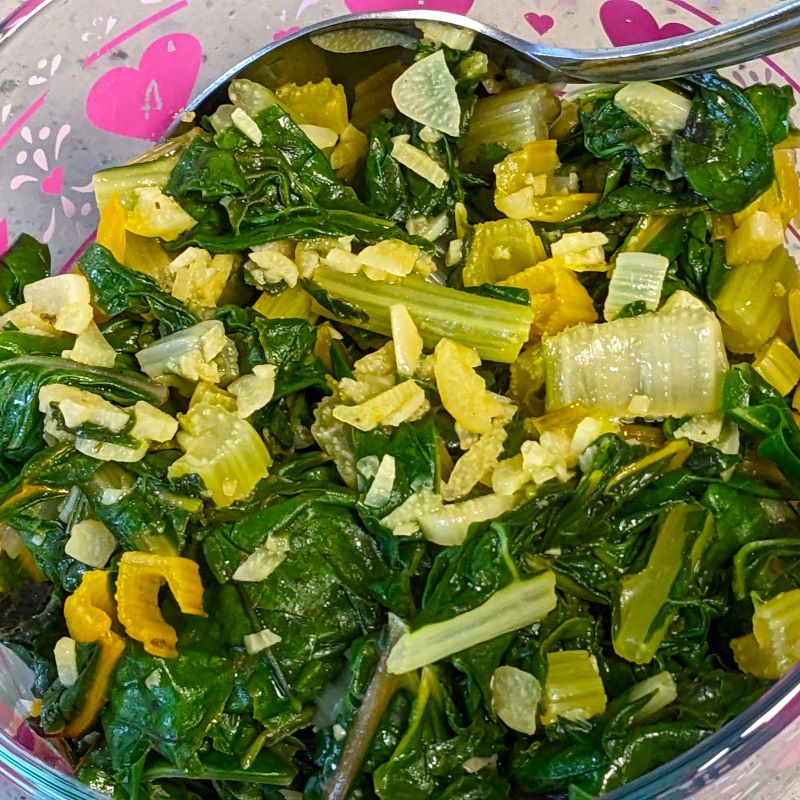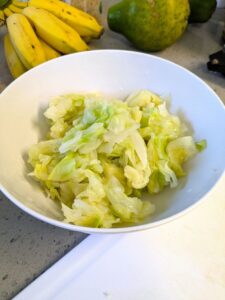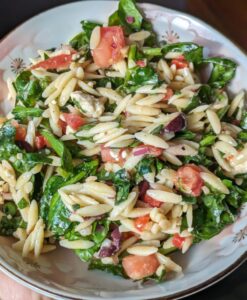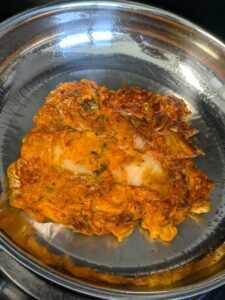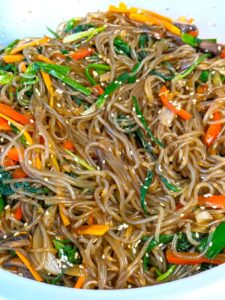This Sauteed Swiss Chard recipe is a simple way to serve up this nutritious leafy green. This is one of my favorite and easiest ways to enjoy this healthy vegetable.
While my father was recovering from a fractured thigh bone, I cooked a few healthy meals for him since he couldn’t stand for long periods of time to cook. One of them was lemon garlic ono filets with quinoa and sauteed Swiss chard. He explained that he always saw Swiss chard and rainbow chard but never tried it because he didn’t know what to do with it. Read on to see what to do with this pretty vegetable!
Ways to Use Swiss Chard
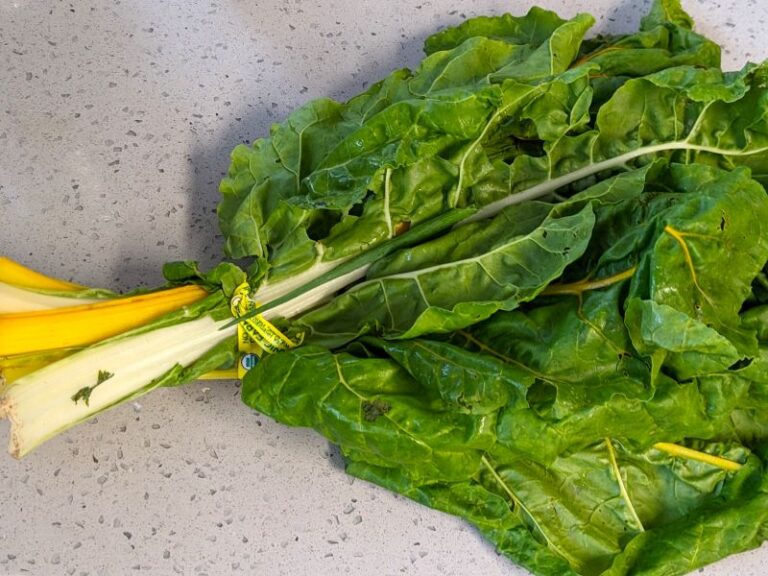
Swiss chard can easily be used in place of and with cooked spinach. It’s wonderful in soups and in pasta. When cooked, it’s just lightly less sweet than spinach, with a heartier texture, but nowhere near as strong or firm as kale. Don’t forget about salads, smoothies, and pesto sauce. The leaves can be used raw just like spinach.
Can You Eat Swiss Chard Stems?
Yes, you can! They are much softer than heartier leafy greens such as kale. When cooked, Swiss chard stems are like cooked beet green stems (the top of the beets that get cut off from the beet root) or firmly cooked celery in terms of texture. Makes sense since Swiss chard is in the same family as spinach and beets! If you are not a kale fan but want to mix up your veggie rotation, Swiss chard may be for you!

Swiss Chard Health Benefits
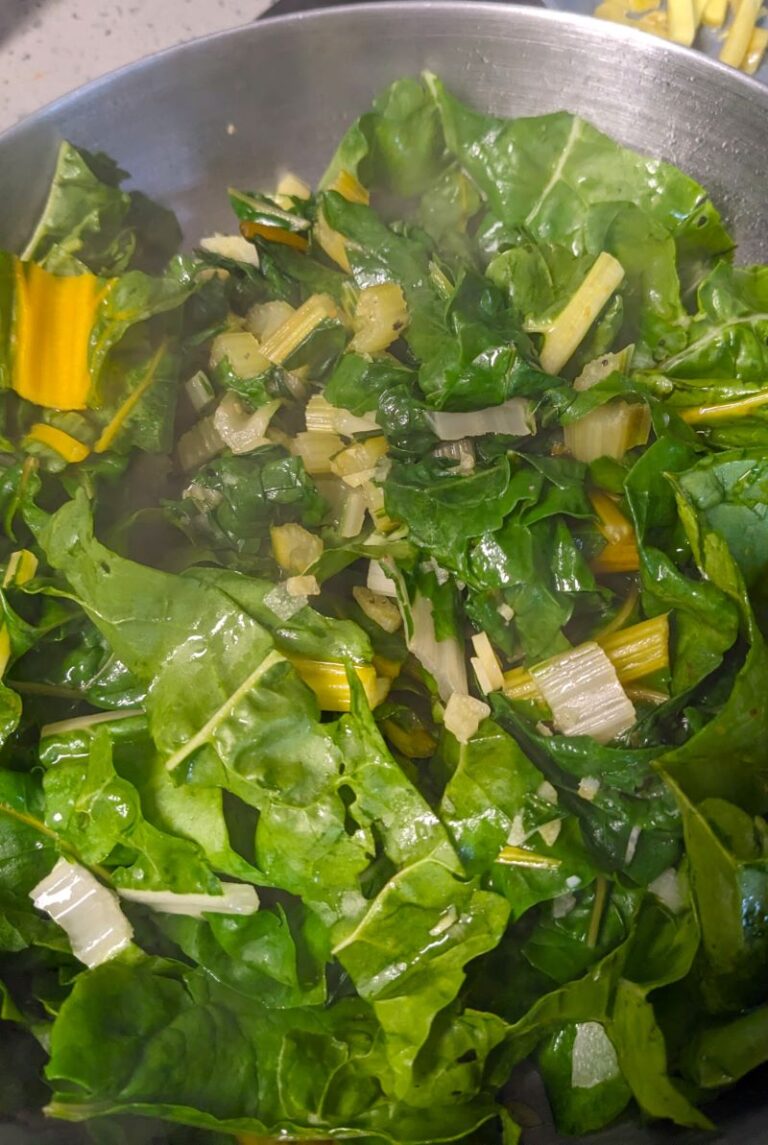
Of course, this vegetable has tons of fiber and helps to clean your insides. Just 1 cup of cooked Swiss chard has 447% of your daily Vitamin K, and a heaping amount of other critical vitamins and minerals such as Vitamin A, Vitamin C, Magnesium, Manganese, Iron, and more. These vitamins and minerals help to take care of your heart, your blood flow, and your mind.
In addition, Swiss chard also has antioxidants that might help to protect you from chronic diseases such as cancer, diabetes, and heart disease. What’s even better is that it is low in calories so it’s a great way to balance out your day or week of eating after lots of snacking and Valentine’s eating. Looking for a food to help reset your diet and for anti-inflammation properties? You’ve found it!
However, beware if you are on blood thinner medications and do not already regularly eat Swiss chard. The high Vitamin K levels might interfere with the blood thinner medications if you suddenly start eating a high amount of this vegetable. Too much could also cause kidney stones, so keep your Swiss chard intake to 2 or 3 times a month.
Swiss Chard Substitute
If you can’t find Swiss chard, spinach or rainbow chard are great substitutes. Spinach is a little sweeter and has a more tender bite when cooked. Rainbow chard is a close alternative; they look almost identical, and some people might easily mix them up.
You could also substitute it with beet greens. Pick up some beets from your local farmers market that have the beet greens still attached. Your beets will be fresher and you’ll have beet greens to saute for some variety. A win win!
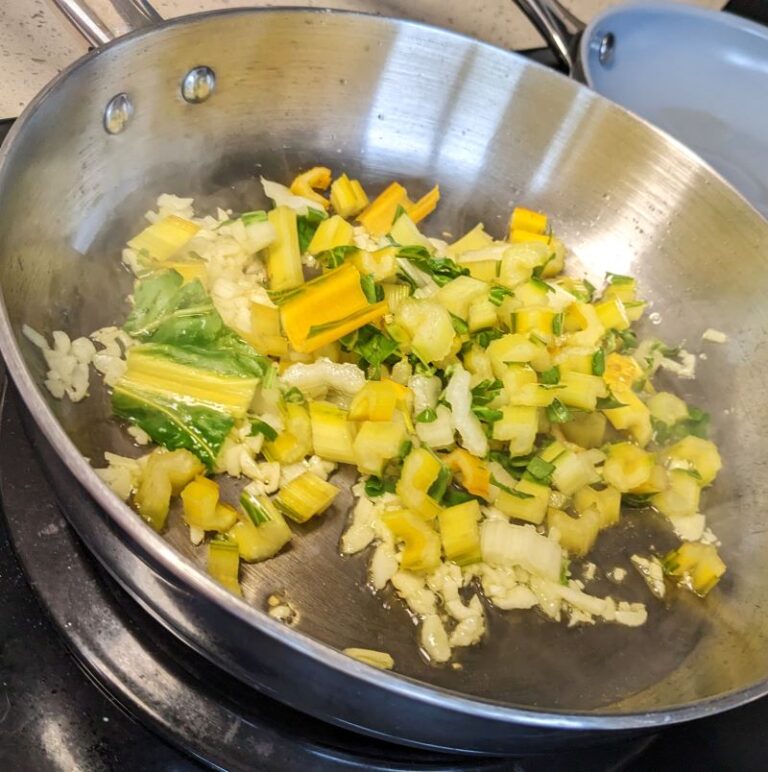
If you need other side dishes to add to your meal, check out these delicious recipes:
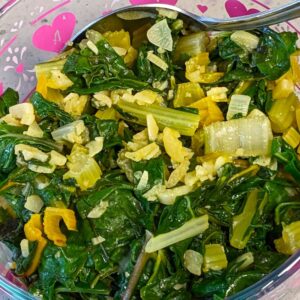
Sauteed Swiss Chard
Equipment
- 1 Large bowl optional
- 1 large cutting board
- 1 chef's knife
- 1 10" saute pan
Ingredients
- 1 bunch Swiss chard
- 2 tbsp extra virgin olive oil
- 5 garlic cloves sliced or chopped
- ¼ tsp salt or seasoned salt
- ¼ tsp fresh ground black pepper
- 1 tsp lemon zest (about half a lemon) optional
- ½ lemon juiced, optional
Instructions
- Wash and chop the Swiss chard, separating the stems from the leaves. It’s okay to leave the thinner stems attached to the leaves. Peel and slice the garlic.
- Optional: If you want a strong lemon flavor, zest half of the lemon before you cut it in half and reserve the zest. Juice zested lemon half and save other lemon half for another recipe or for lemon water.
- Preheat sauté pan over medium high heat. Add oil to pan.
- Add the Swiss chard stems, garlic, salt, and pepper to the pan. Cook for about 2 to 3 minutes, stirring frequently so the garlic doesn’t burn.
- Add the Swiss chard leaves to the pan and stir. (If you are using an 8-inch sauté pan, add the leaves in batches and stir so they wilt, and you can fit more raw leaves into the pan.) Cook for about 3 to 5 minutes, stirring occasionally so all the leaves wilt evenly. (For an 8-inch sauté pan, cook for about 5 to 8 minutes.)
- In the last minute of cooking, add your lemon zest and lemon juice (if using).

